The Specialized Status is one of the most mysterious bikes currently on the market: it doesn’t appear on Specialized’s official website, conceals its origin when you see it in person and for a high-end brand like Specialized, costs surprisingly little. We had the chance to test the secretive 160 mm travel mullet bike in the bike park.
Get an overview of the grouptest here: The best bike park bike of 2021 – 6 models in review
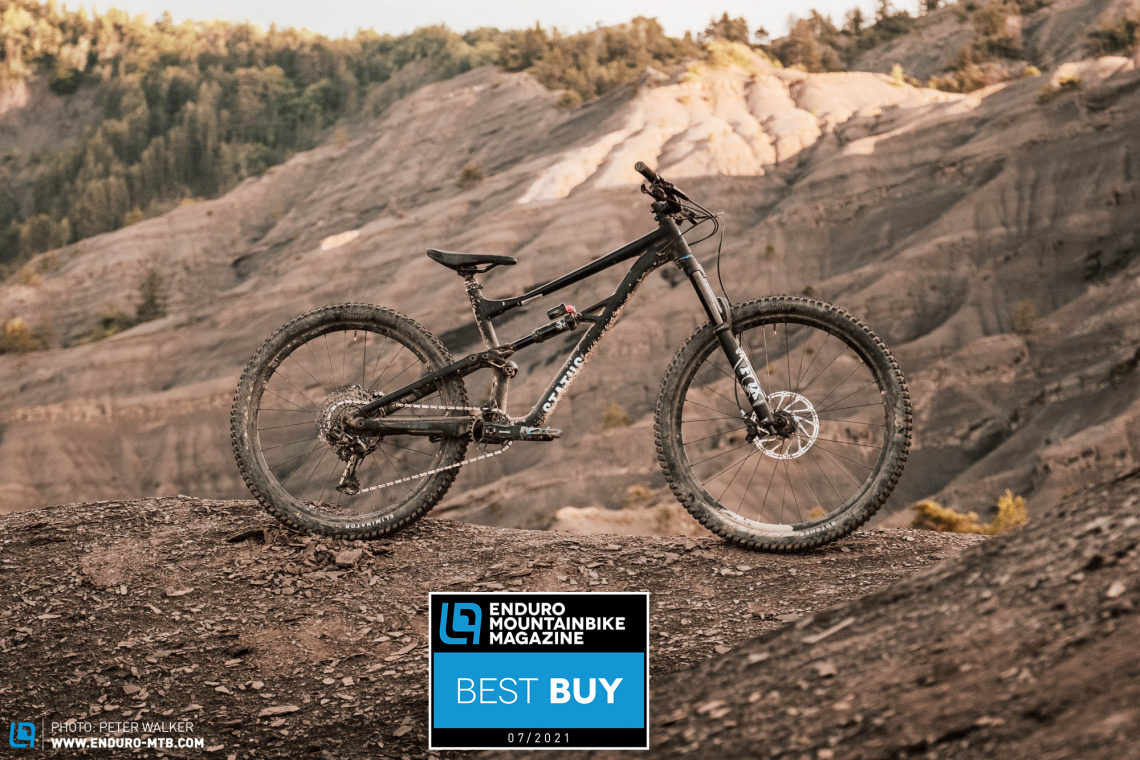
16.1 kg in size S4 | € 2,999 | Manufacturer’s website
You’ll be searching in vain for the Status 160 on Specialized’s website. Only when you delve into the depths of the internet do you come across an almost puritanical website with few pictures and scant information about the bike – whose name is crossed out everywhere anyway, calling into question its claim for status. Nor does the Specialized bike gain its reputation through a premium price, being thoroughly affordable at € 2,999. No, the hype exists because despite the price, this bike is a rarity. The Status, just like its marketing, is all about understatement. The aluminium frame and solid spec are anything but flashy. You won’t find emblazoned Specialized logos or shiny parts here. Instead, only the 160 mm travel FSR suspension provides hints to the bike’s origin. Specialized furnish the new Status with a mullet setup consisting of a 29” front and 27.5” rear wheel. Becoming of its entry-level price, the Status 160 delivers the most fun on flowing tracks with small jumps and is manoeuvrable and agile on the trails. The comparatively delicate frame has a tidy look with internally routed cables which are securely clamped in place. However, you’ll need to improve upon the chainstay protector, which is a little short and leaves the chain free to hit the frame.
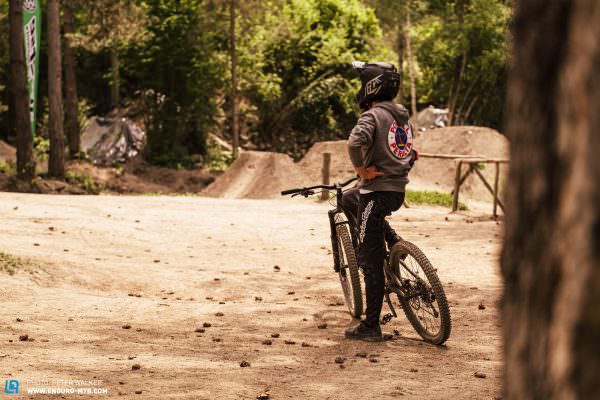
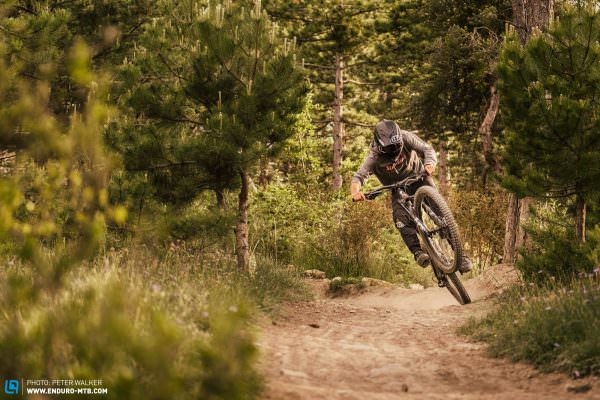
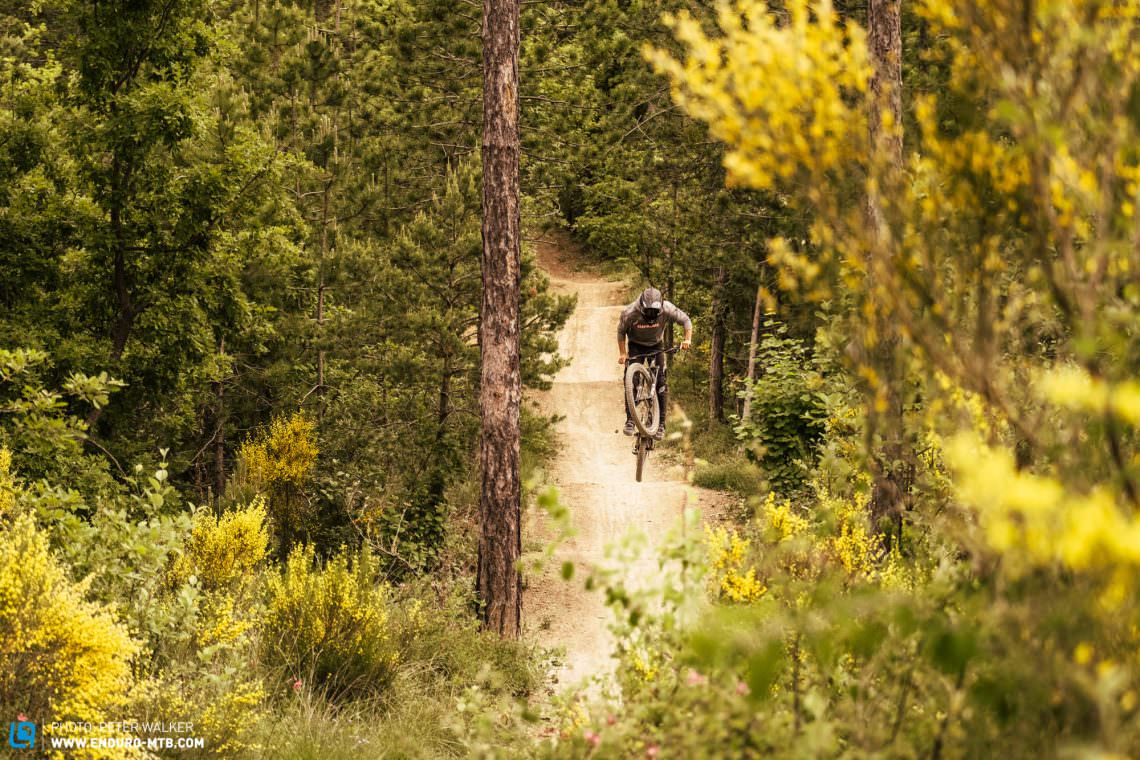
The spec of the affordable Specialized Status 160
Needless to say, the spec of the 16.1 kg Status 160 reflects its price and some of the components can’t keep up with the bling components of more expensive bikes like the Nukeproof Giga and Propain Spindrift. First and foremost, that means the 160 mm FOX 36 Rhythm fork, which features a basic GRIP damper with stepless low-speed rebound and compression damping adjustment. However, the 36 mm chassis flexes noticeably more than its beefier 38 counterpart, particularly for heavier riders and an aggressive riding style. For more reserves, we recommend adding volume spacers. The FOX DPX2 Performance shock features a three-position compression lever that allows you to switch between open, trail and climb modes. The middle trail mode is a great choice for flowing trails and jumps. For the brakes, Specialized rely on SRAM Code R four-piston brakes with 200 mm rotors. However, being the cheaper version, these don’t have the variable leverageSwingLink levers or bite point adjustment and feel spongier than its RSC flagship counterpart. Without the SwingLink, staying on the brakes on steep technical trails requires more strength and is more likely to cause arm pump.
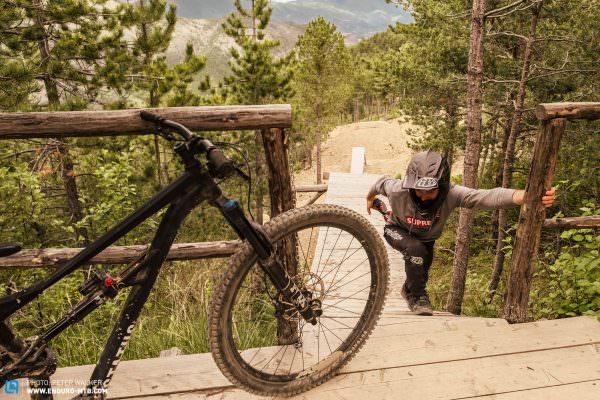

The shifting performance of the cheap SRAM NX 12-speed is worryingly inconsistent and fails to inspire confidence on the trail – not good! When you have to throw in a quick spin of the cranks to adjust your speed before a big drop or jump, the last thing you need is a drivetrain that shifts gears by itself, but that’s exactly what happened to us! For all other components, Specialized rely on in-house parts, including the 780 mm alloy handlebars and Roval alloy wheelset. On our test bike, Specialized upgraded the standard Butcher and Eliminator tires to the more robust version with the Grid Gravity casing. However, a pinch flat still left a decent dent in the rim.

In this group test, we didn’t rate the performance of drivetrains, because we were only going downhill. However, the SRAM NX created some very bad vibes, especially in gnarly sections where you have to throw in an extra spin of the cranks to adjust your speed. In a nutshell, the unreliable shifting performance can be pretty dangerous.

The small chain guide keeps everything in place. For heavy bike park sessions, we would recommend running a bash guard too.
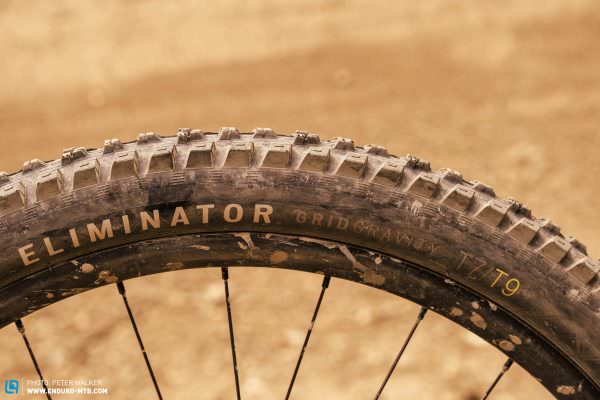
Specialized upgraded both tires to the robust Grid Gravity casing. We approve !
Specialized Status 160
€ 2,999
Specifications
Fork FOX 36 Rhythm 160 mm
Rear Shock FOX FLOAT DPX2 Performance 160 mm
Seatpost X-Fusion Manic 150 mm
Brakes SRAM CODE R 200/200 mm
Drivetrain SRAM NX Eagle 12-Speed 10–50
Stem Specialized Alloy Trail 35 mm
Handlebar Specailized Alloy 31,6 780 mm
Wheelset Specialized Roval Traverse Mullet
Tires Specialized Butcher Grid Gravity T9 / Specailized Eliminator Grid Gravity T7/T9 2.3 / 2.3
Technical Data
Size S1 S2 S3 S4 S5
Weight 16.1 kg

We rode the Status exclusively in the low setting, which is the one we recommend if you ride in the bike park.
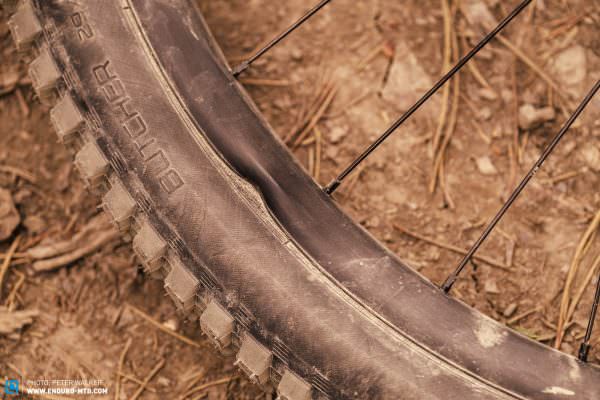
Despite the robust tire casing, we managed to damage the soft Specialized Roval wheelset. The good thing? Aluminum can be straightened back into place.
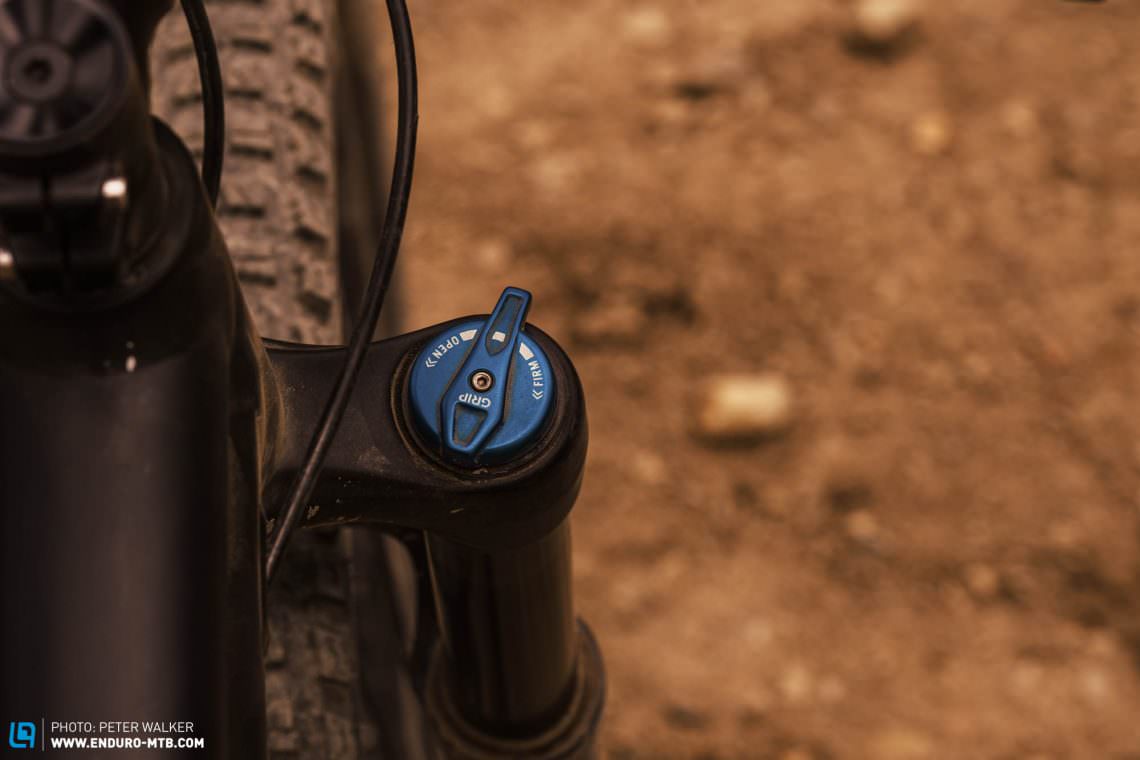
The low speed compression adjuster of the GRIP damper of the FOX 36 Rhythm is stepless. The labeling with “OPEN” and “FIRM” can be misleading. For bike park laps, we left the dial in the middle.
The geometry of the Specialized Status 160
The Status adopts Specialized’s S-sizing system, which lets you pick your frame size depending on your riding style and preferences. This is possible thanks to the short seat tube, which is 440 mm in size S4. 5 sizes,S1 to S5, are available to choose from. Our test riders measuring between 172 and 190 cm tall got along well with our test bike in size S4, which has a 487 mm reach. The very slack 63.2° head angle and super-short 426 mm chainstays ensure a nimble character. In typical ENDURO fashion, we set the flip-chip of the Status to the low setting throughout the test.
Popping off ledges and flying through the air in style? That’s what the Status does best!
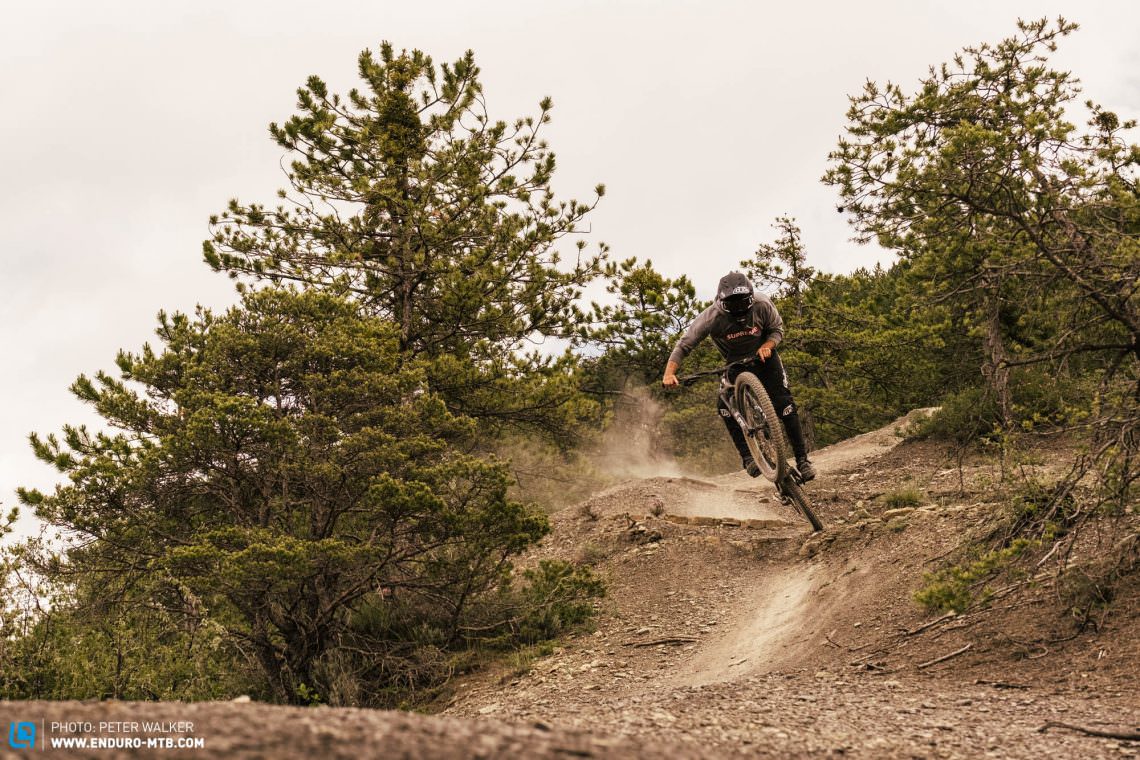
| Size | S1 | S2 | S3 | S4 | S5 |
|---|---|---|---|---|---|
| Seat tube | 400 mm | 400 mm | 420 mm | 440 mm | 465 mm |
| Top tube | 756 mm | 778 mm | 808 mm | 837 mm | 867 mm |
| Head tube | 95 mm | 100 mm | 110 mm | 120 mm | 130 mm |
| Head angle | 63.2° | 63.2° | 63.2° | 63.2° | 63.2° |
| Seat angle | 76.0° | 76.0° | 76.0° | 76.0° | 76.0° |
| Chainstays | 426 mm | 426 mm | 426 mm | 426 mm | 426 mm |
| BB Drop | 18 mm | 18 mm | 18 mm | 18 mm | 18 mm |
| Wheelbase | 1,181 mm | 1,203 mm | 1,233 mm | 1,264 mm | 1,292 mm |
| Reach | 417 mm | 437 mm | 462 mm | 487 mm | 512 mm |
| Stack | 610 mm | 614 mm | 623 mm | 632 mm | 641 mm |
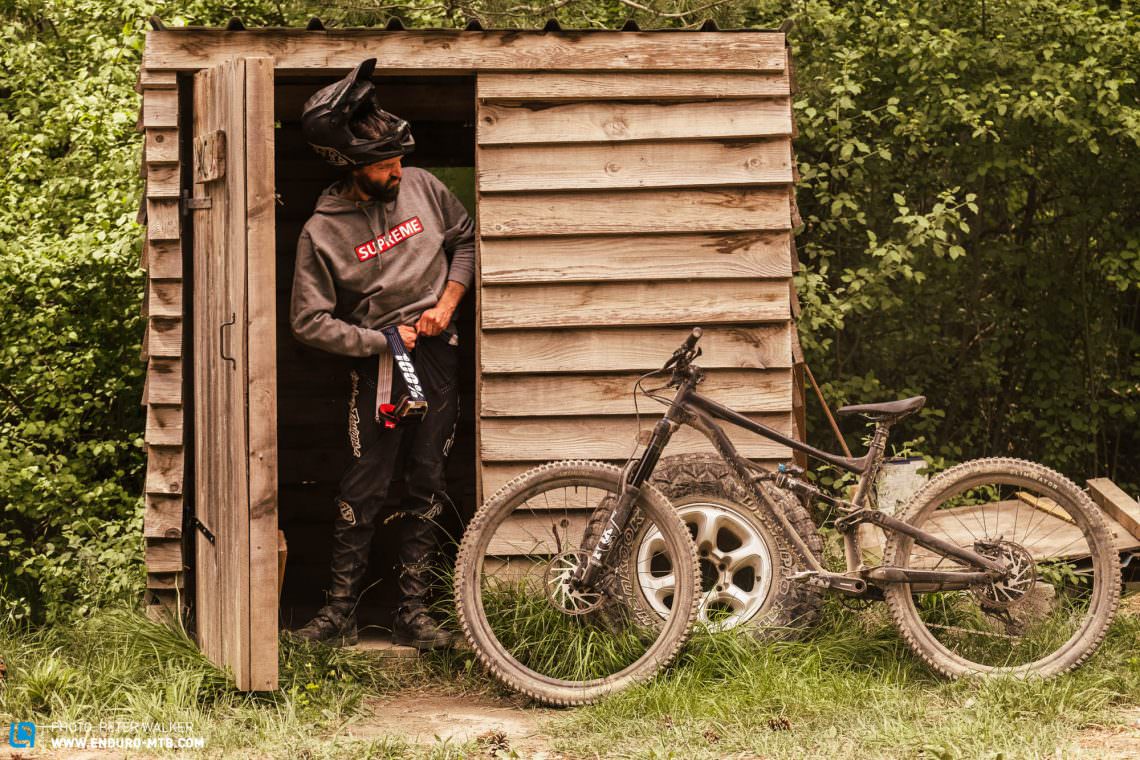
Jersey Powell-Peralta Supreme Medium Weight Hoodie | Pants Troy Lee Designs Sprint Ultra Pant
Kneepad Troy Lee Designs Speed | Shoes Leatt DBX 5.0 Clip | Socks Stance
The Specialized Status 160 hits the bike park
On flowing trails, the Status makes you grin so hard, we had to ice our cheek bones at night. It’s intuitive and easy to control but also incredibly agile and playful, converting the smallest rollers into airtime and begging you to roost through the tallest berms. The bigger the dust cloud, the louder the braap and the wider the grin under your full-face helmet! The Status is the exact opposite of bikes like the Norco Shore and Canyon Torque:ON, playing out its strengths on flowing trail sections and small jumps. The only drawback: onheavy compressions, heavy riders will notice the fork flexing, like when you’re blasting through tight berms at full speed. This comes at the cost of precision and requires a clean choice of lines and good reflexes at the exit of the corner.
Take a left, quick! With the Status, spontaneous changes of direction and cheeky scandi flicks are a piece of cake.

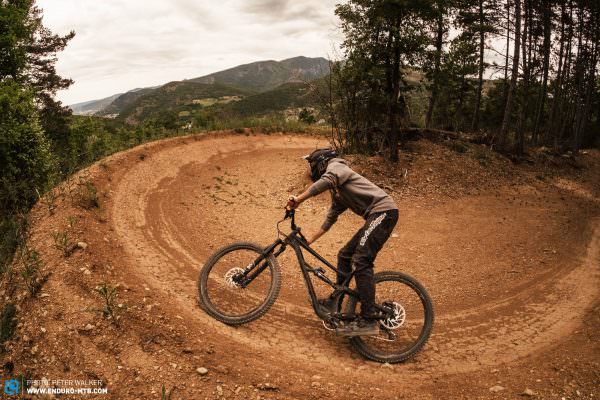
Tuning tips: run CODE RSC brake levers on your existing callipers | mastic tape on the chainstay protector | upgrade the fork damper to the superior GRIP2 model during your first service (approx. € 500)
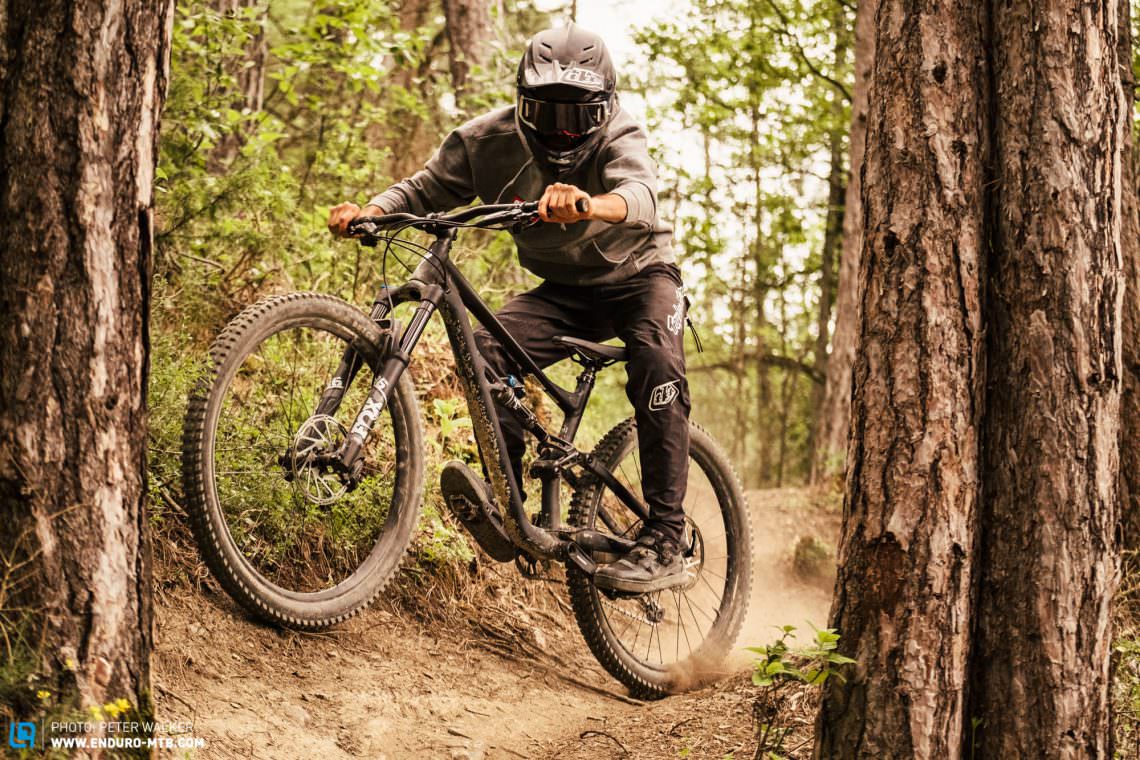
Even over very big jumps, the Status is easy to pull into the air and encourages you to commit to stylish tricks. However, like the YT Capra, it also feels a little nervous mid-air and inspires limited confidence. During botched landings and hard hits, the Status suffers more than its bulkier opponents, the Propain Spindrift, Nukeproof Giga or Norco Shore. On big jumps, experienced riders with the right set of skills and the courage to do so will get the Status sideways without any issue.
On technical terrain, the Status is slowed down mainly by its components, in particular the brakes and suspension. Like the Capra, we recommend adjusting the suspension to the terrain and your riding style to improve the bike’s performance. Simply put, a plusher setup for technical trails and a stiffer, poppier setup for jumps and fast bike park tracks. Here the trail mode of the shock comes in handy! When dragging the brakes on steep technical trails, you can distinctly feel the rear end judder and the fork sink into its travel due to the lack of progression. Nonetheless, the bike always maintains its nimble character. And while the Status doesn’t plough through rough terrain as mercilessly as other bikes in this test, its lively character and direct handling allow you to ride around obstacles with the slightest effort – the Status implements spontaneous changes of direction even more willingly than the traction monster Nukeproof Giga!
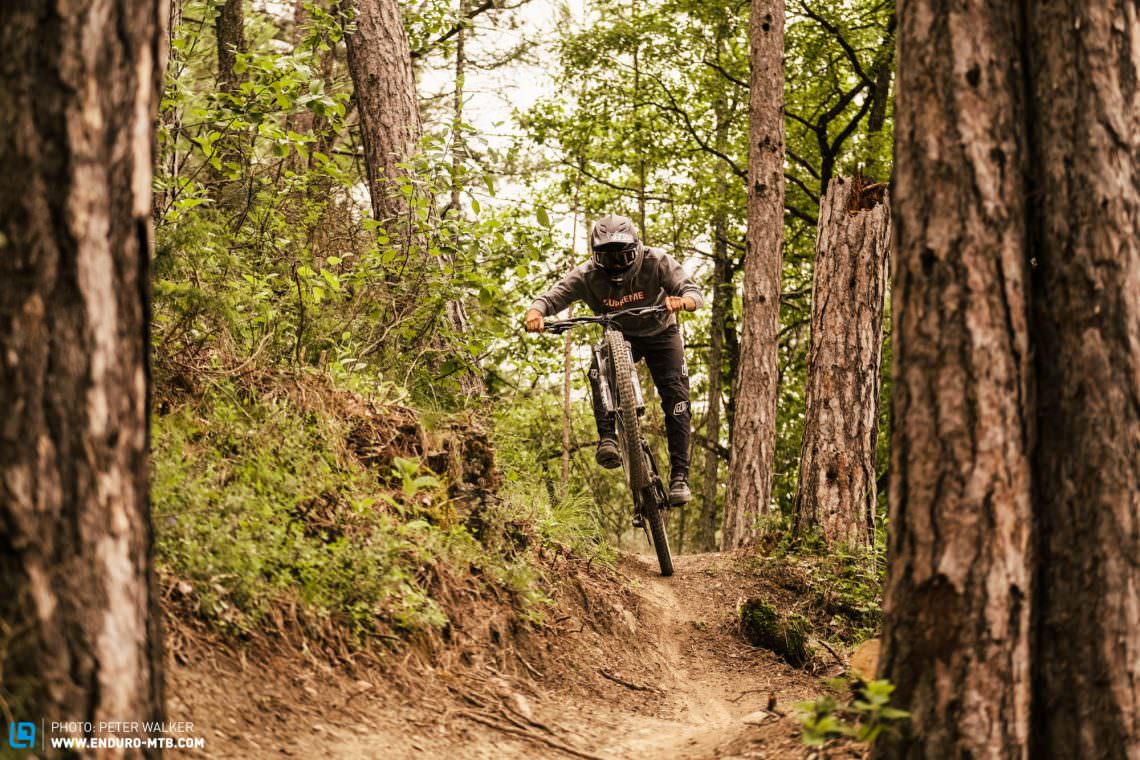
Conclusion
The Specialized Status 160 is the perfect choice for beginners and flow hunters, both because of its affordable price and fun, agile handling. On tight berms, jumps and at slower speeds, the Status was the most fun bike in our bike park test. On the other hand, huge jumps and fast trails require massive cocoa pops and good riding skills. On technical terrain, the bike is limited by its spec, but you can always upgrade! Despite that, the Status delivers an impressive performance and offers great value for money, securing the coveted Best Buy in our bike park group test.
Tops
- cheap
- super-playful and fun handling
- spontaneous on the trail
Flops
- fork and brakes limit the performance of the bike
- requires specific suspension setups to suit flow and tech trails
You can find out more about at statusmtb.bike
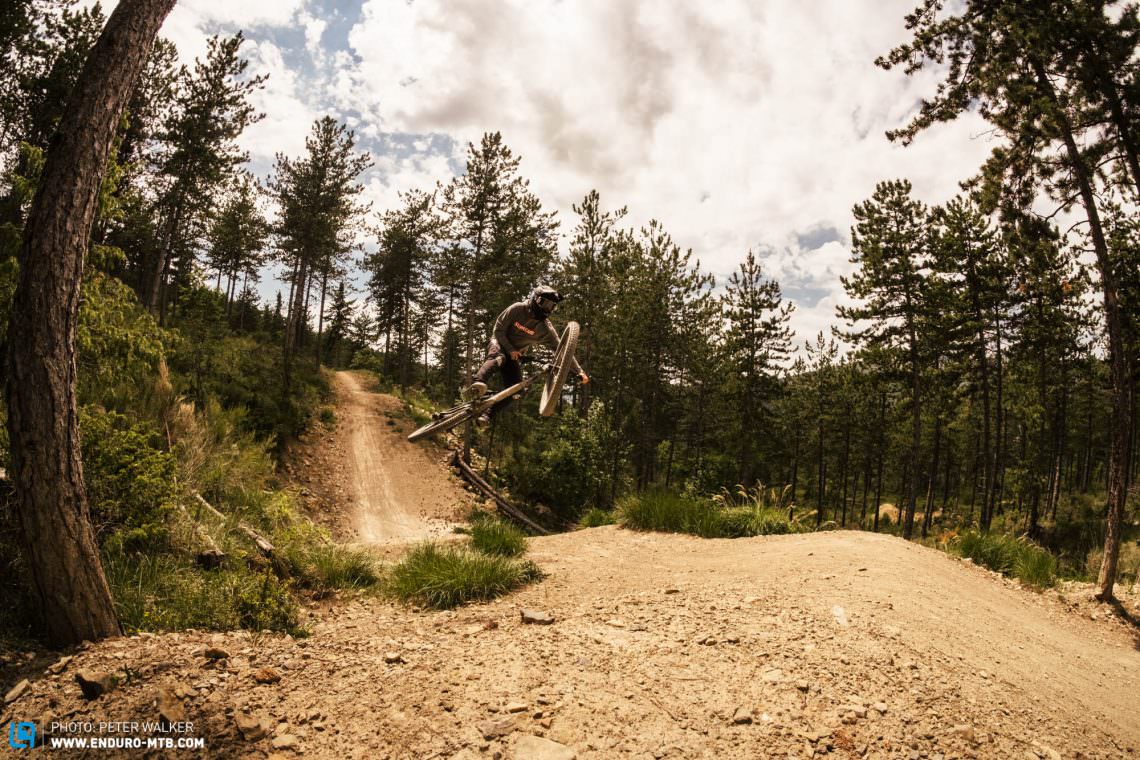
The testfield
Get an overview of the grouptest here: The best bike park bike of 2021 – 6 models in review
All Bikes in this group test: Canyon Torque:ON 9 (Click for review) | Norco Shore 1 (Click for review) | Nukeproof Giga 290 Carbon Factory (Click for review) | Propain Spindrift CF Mix (Click for review) | Specialized Status 160 | YT CAPRA 29 CORE 4 (Click for review)
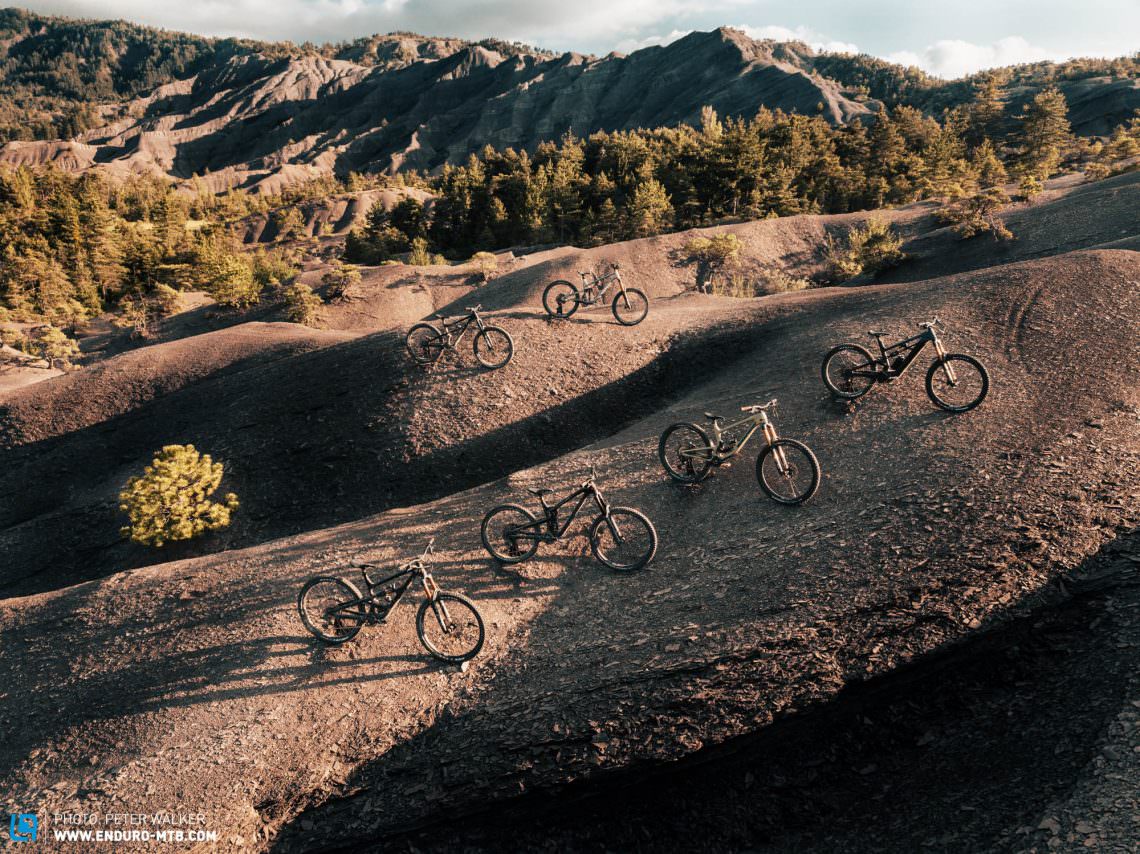
Did you enjoy this article? If so, we would be stoked if you decide to support us with a monthly contribution. By becoming a supporter of ENDURO, you will help secure a sustainable future for high-quality mountain bike journalism. Click here to learn more.
Words: Peter Walker Photos: Peter Walker









